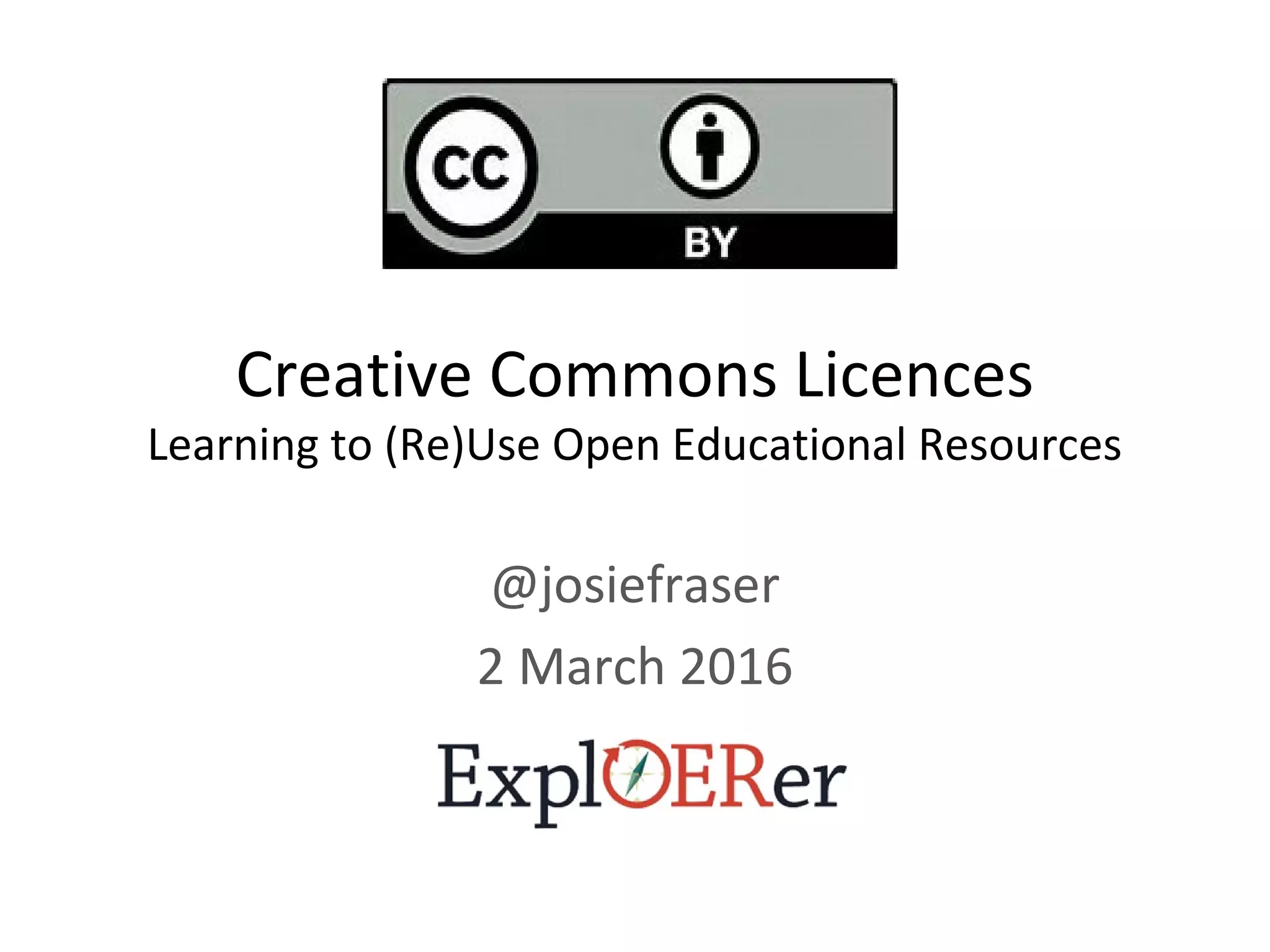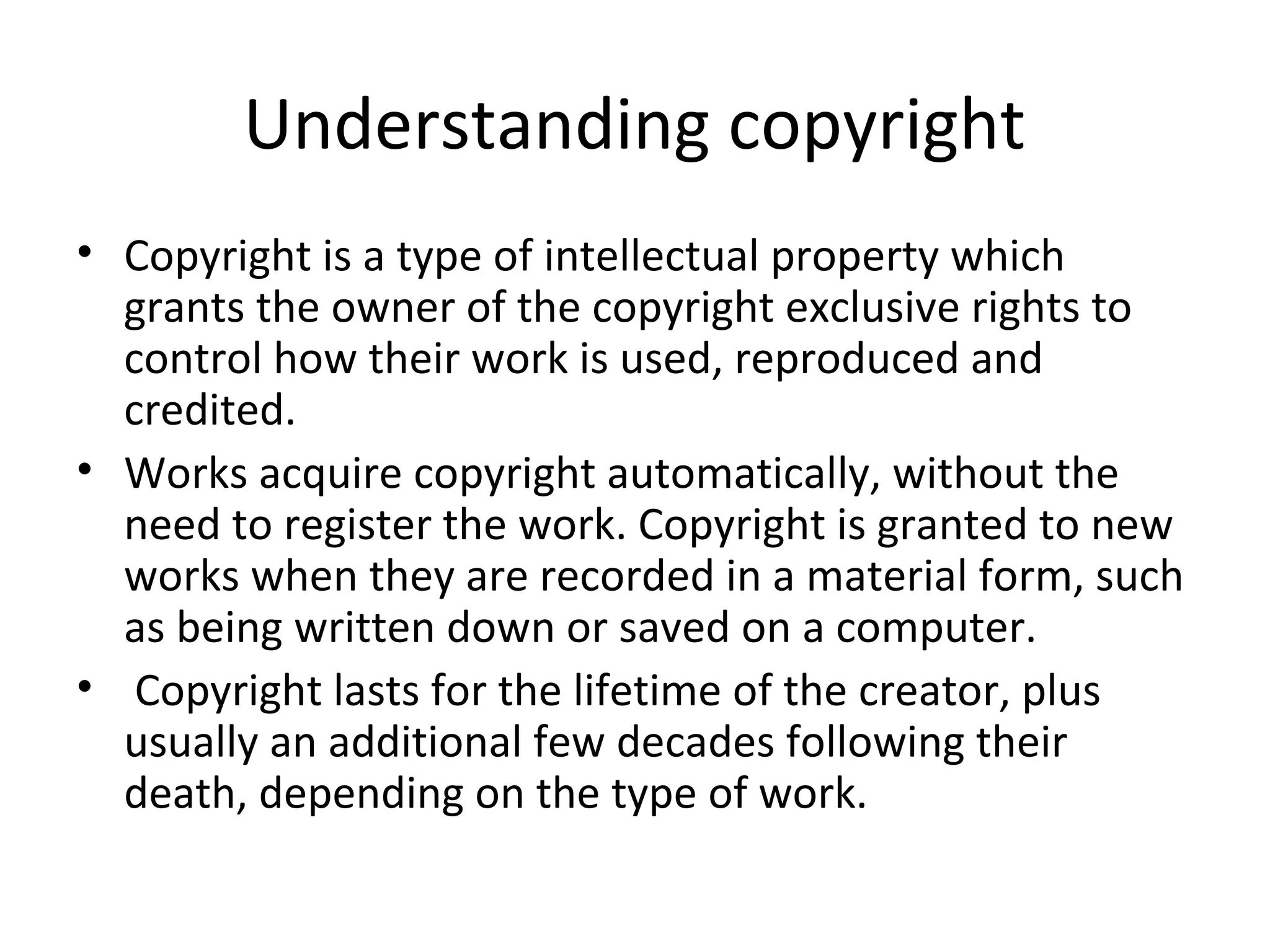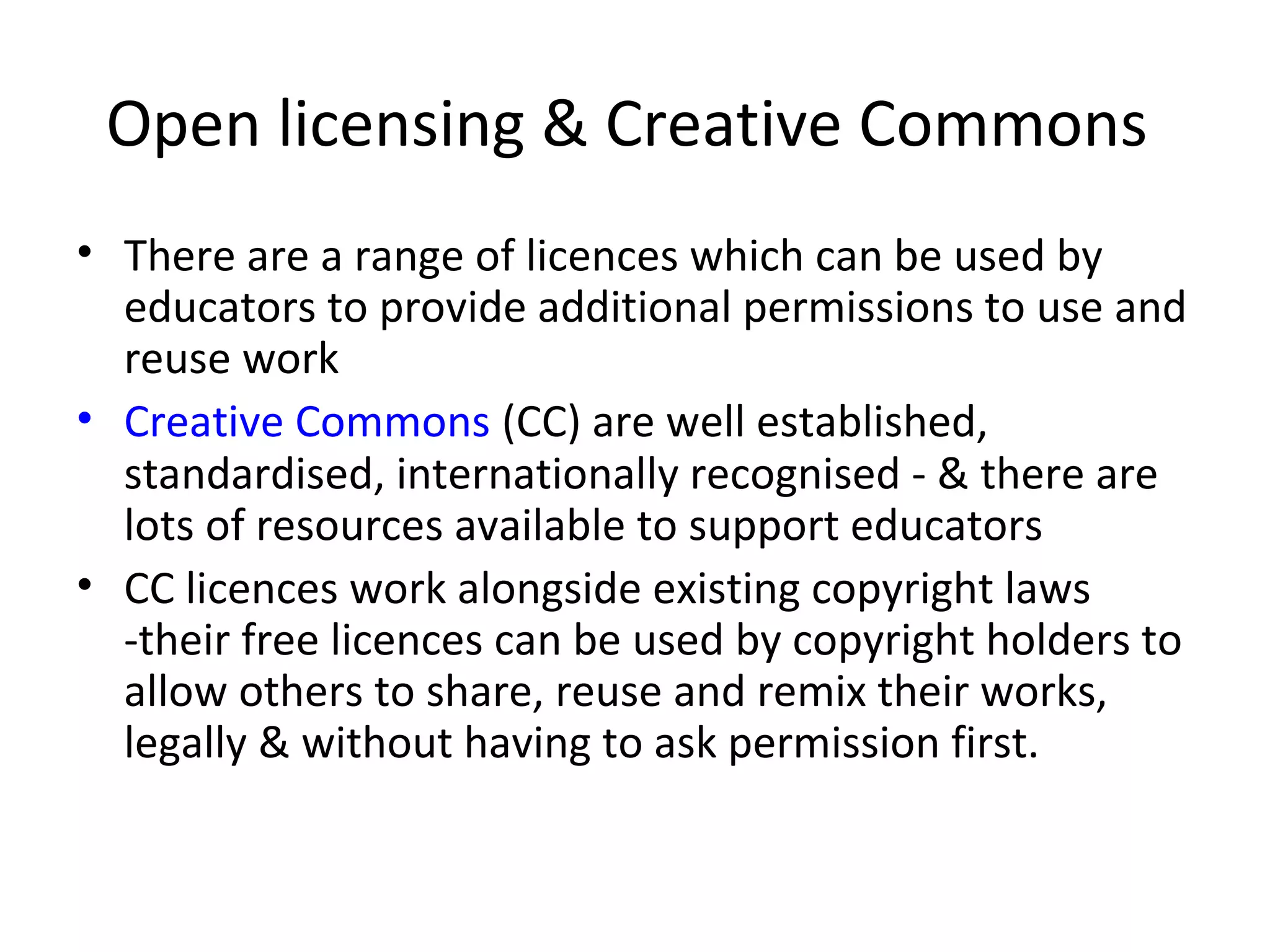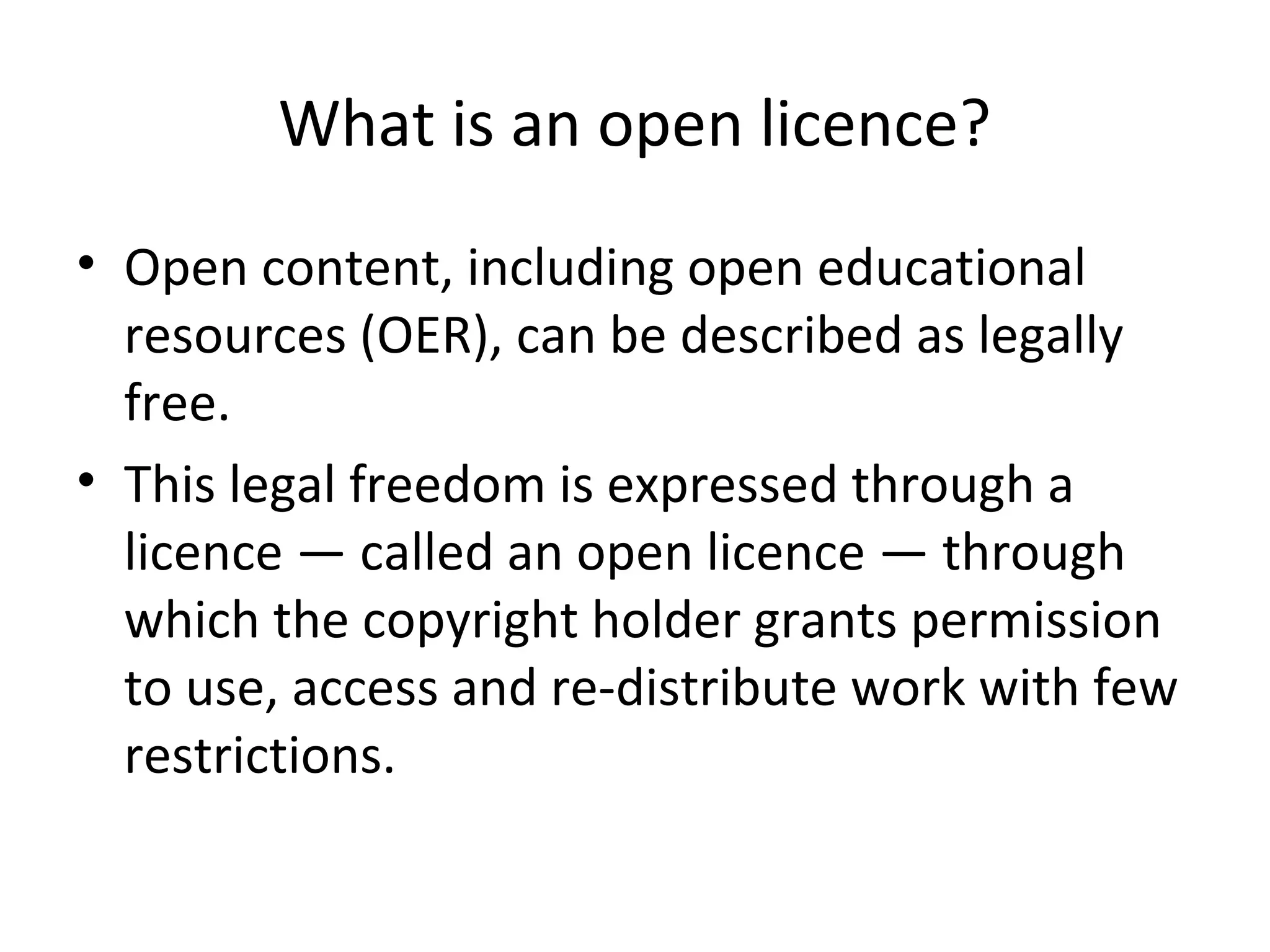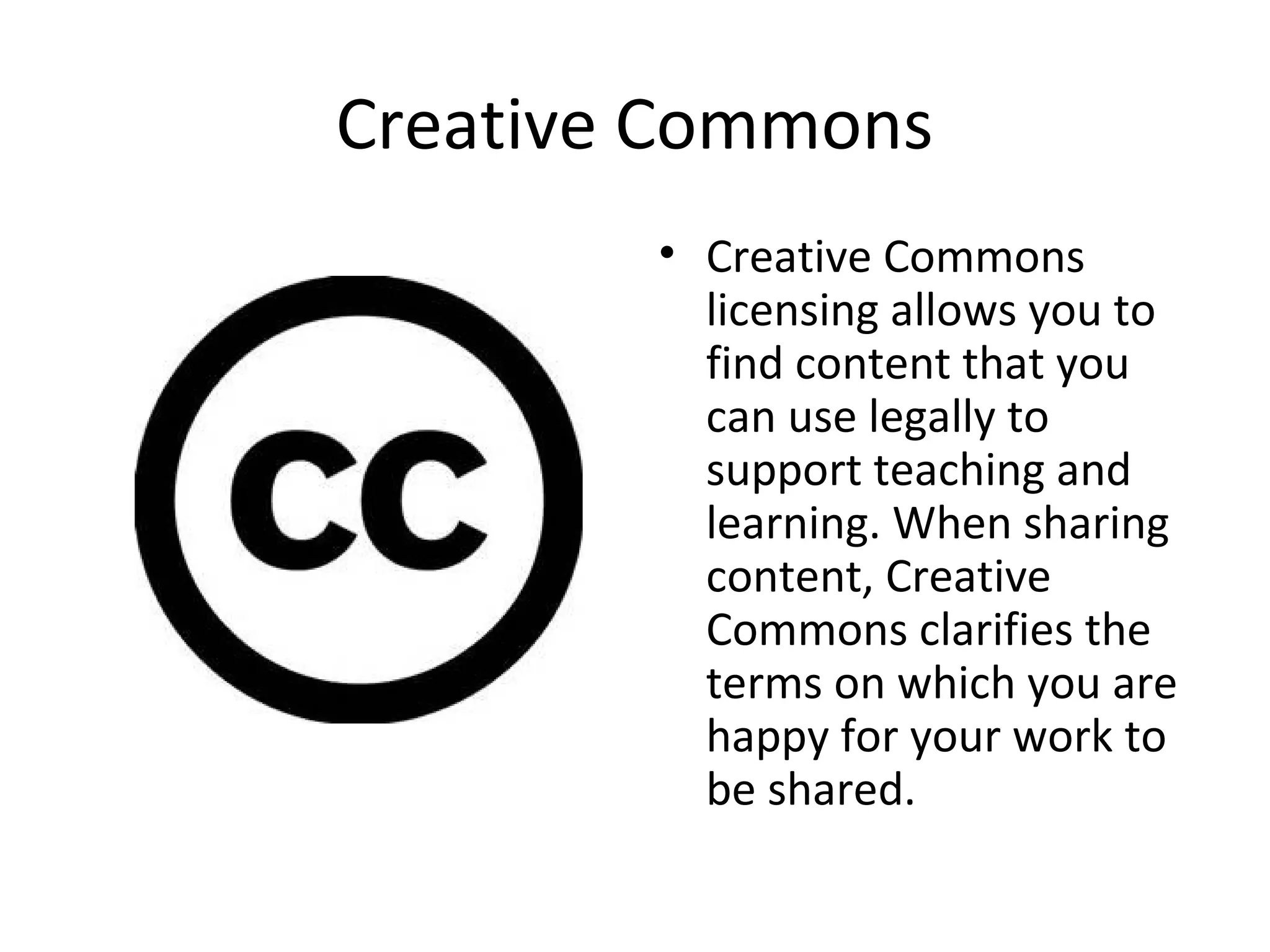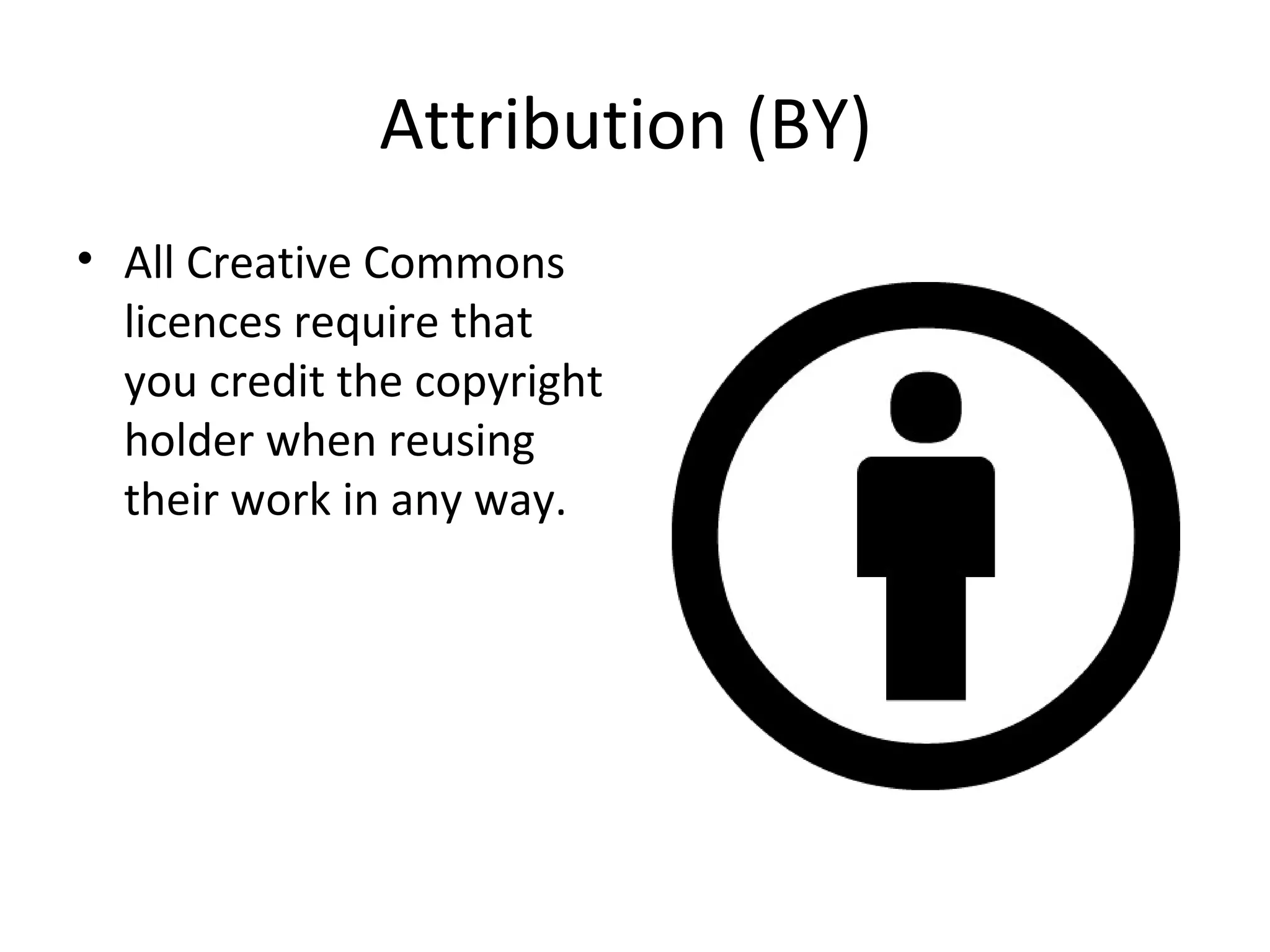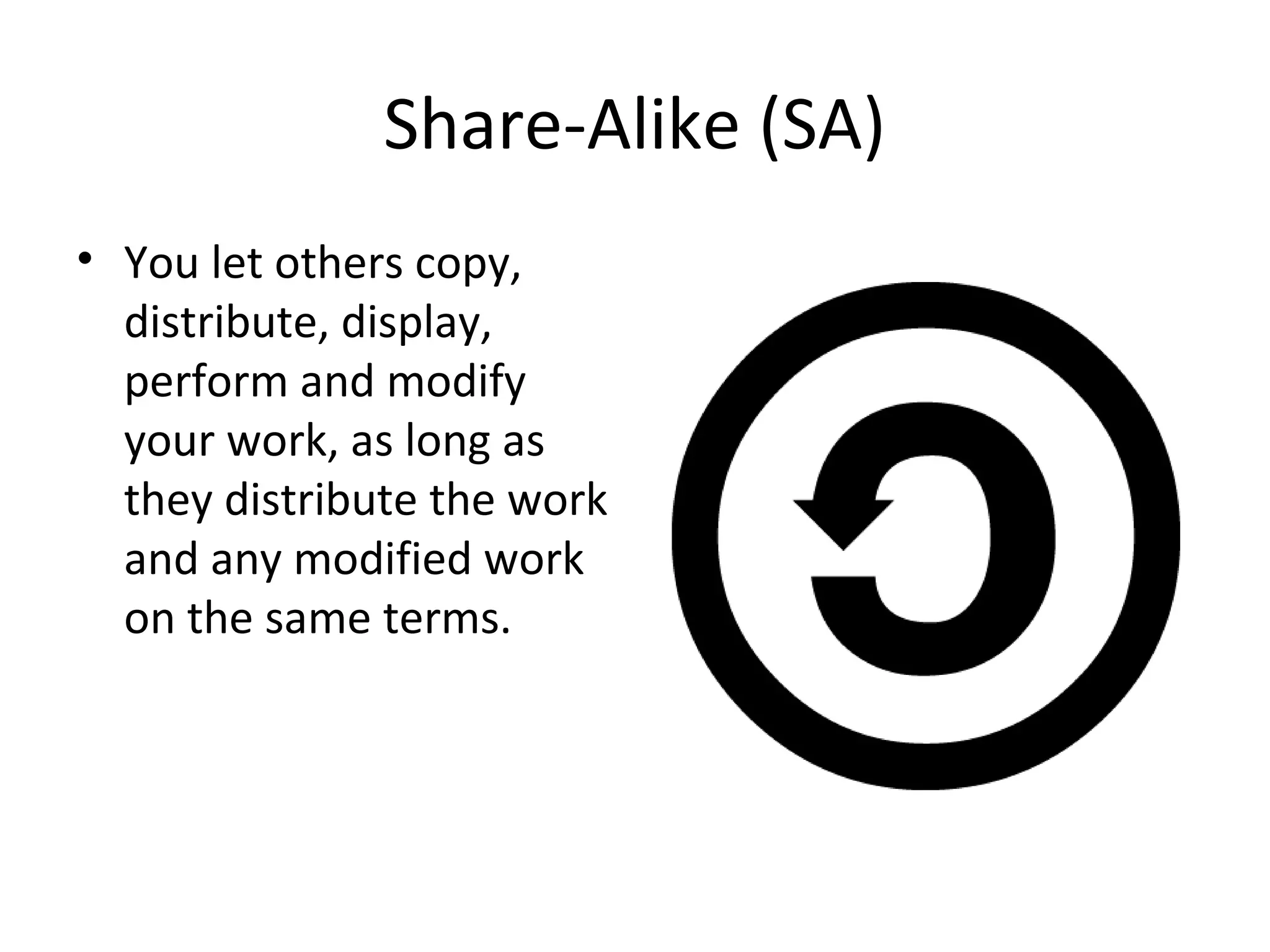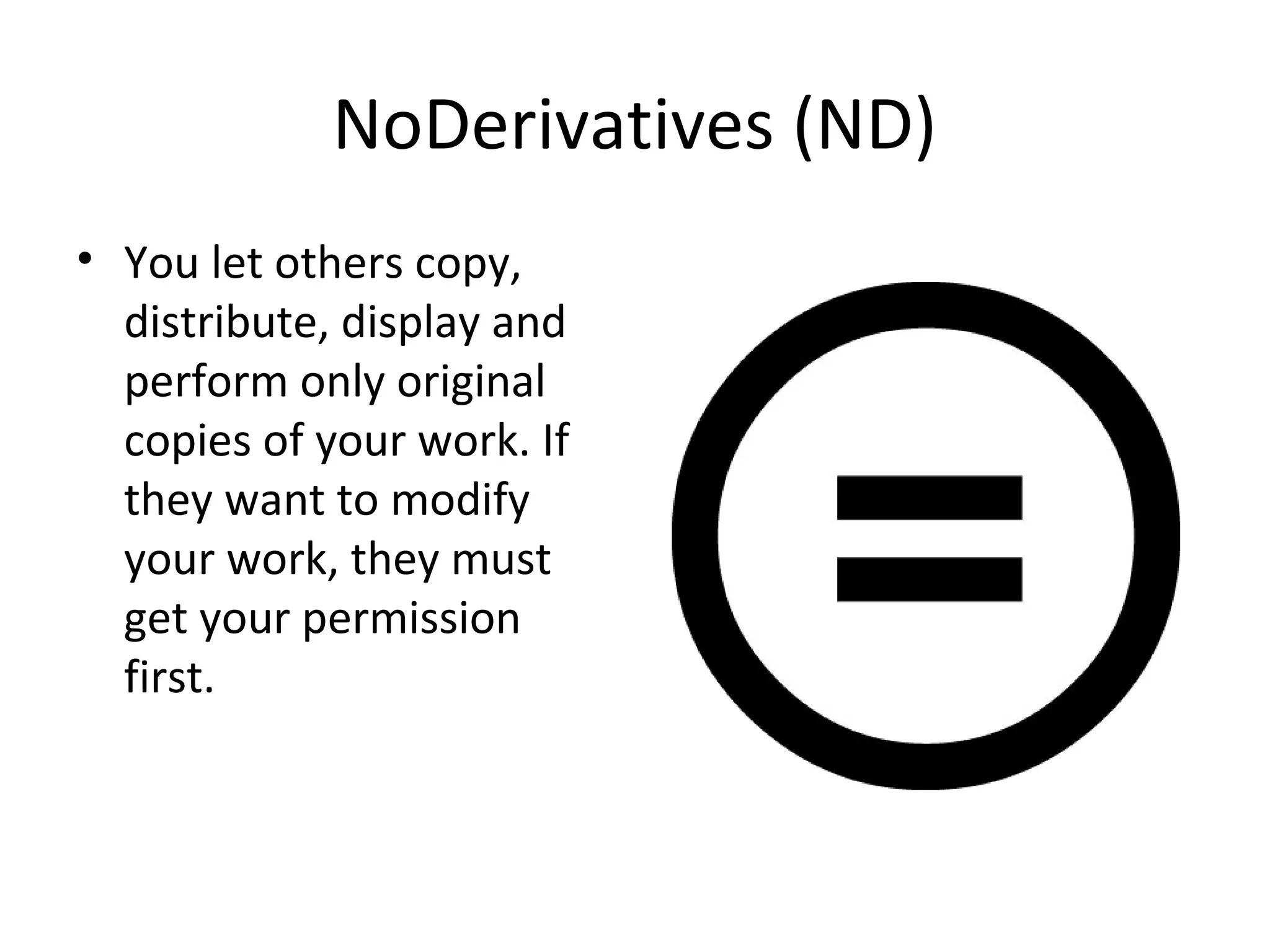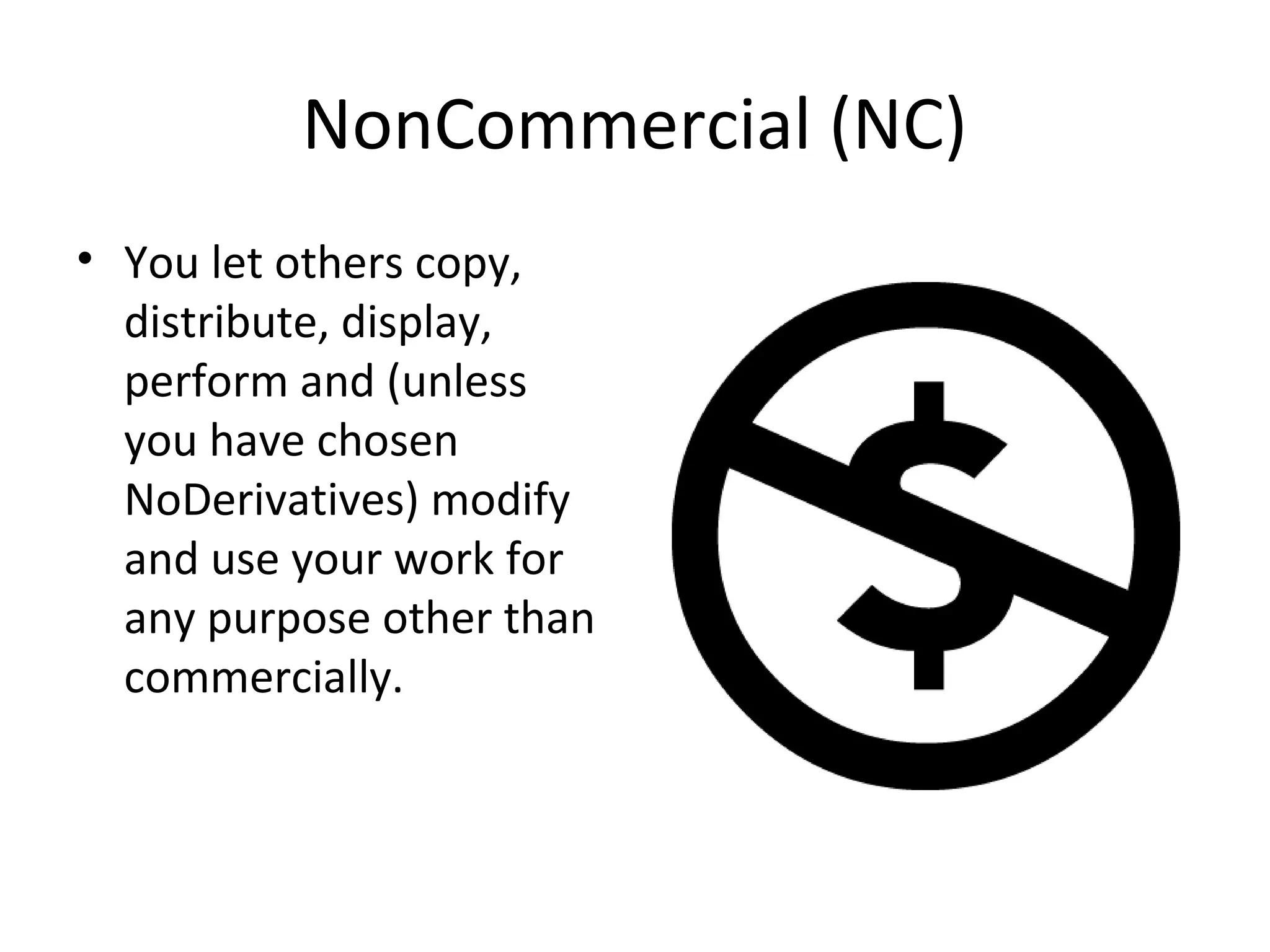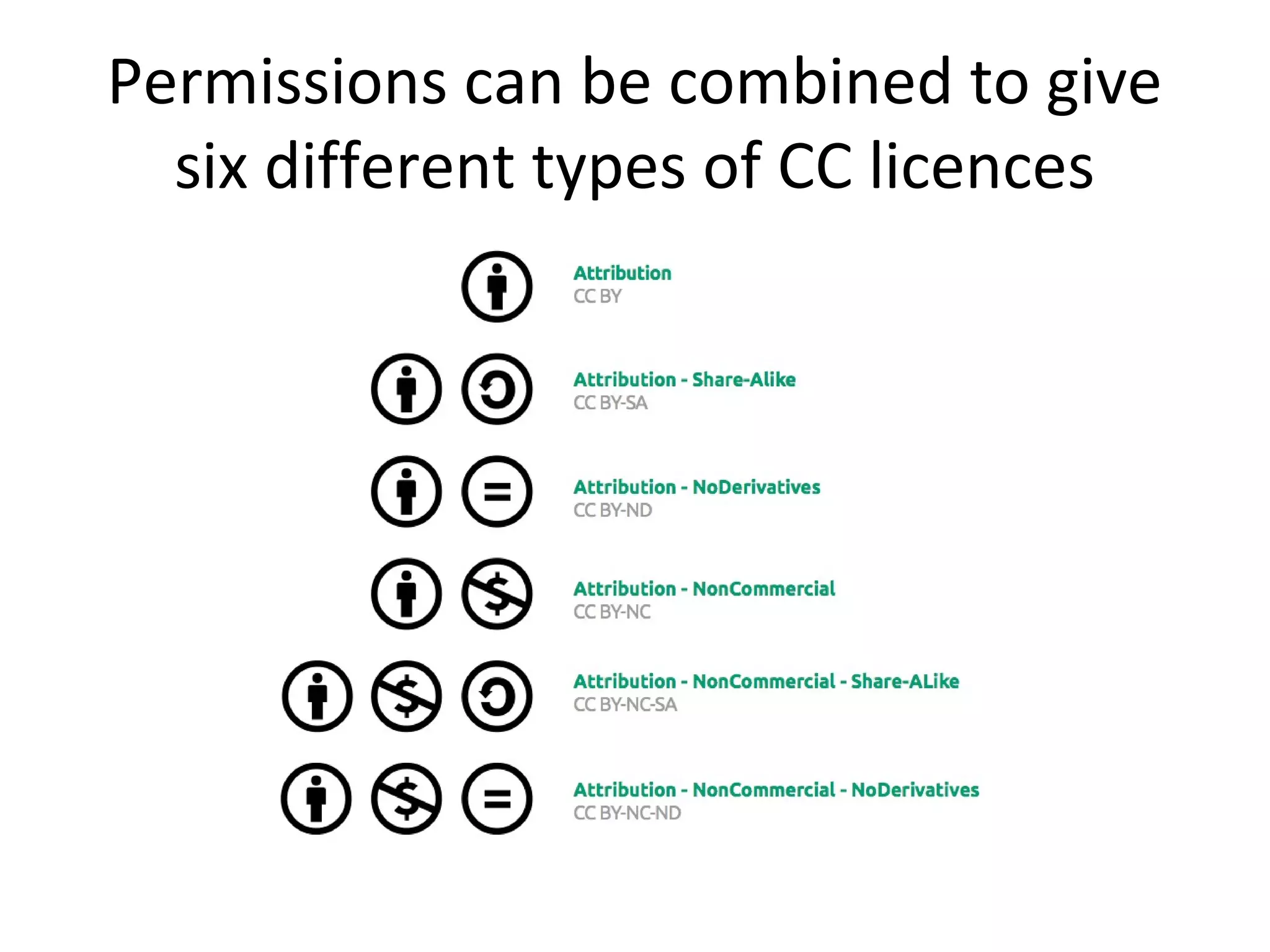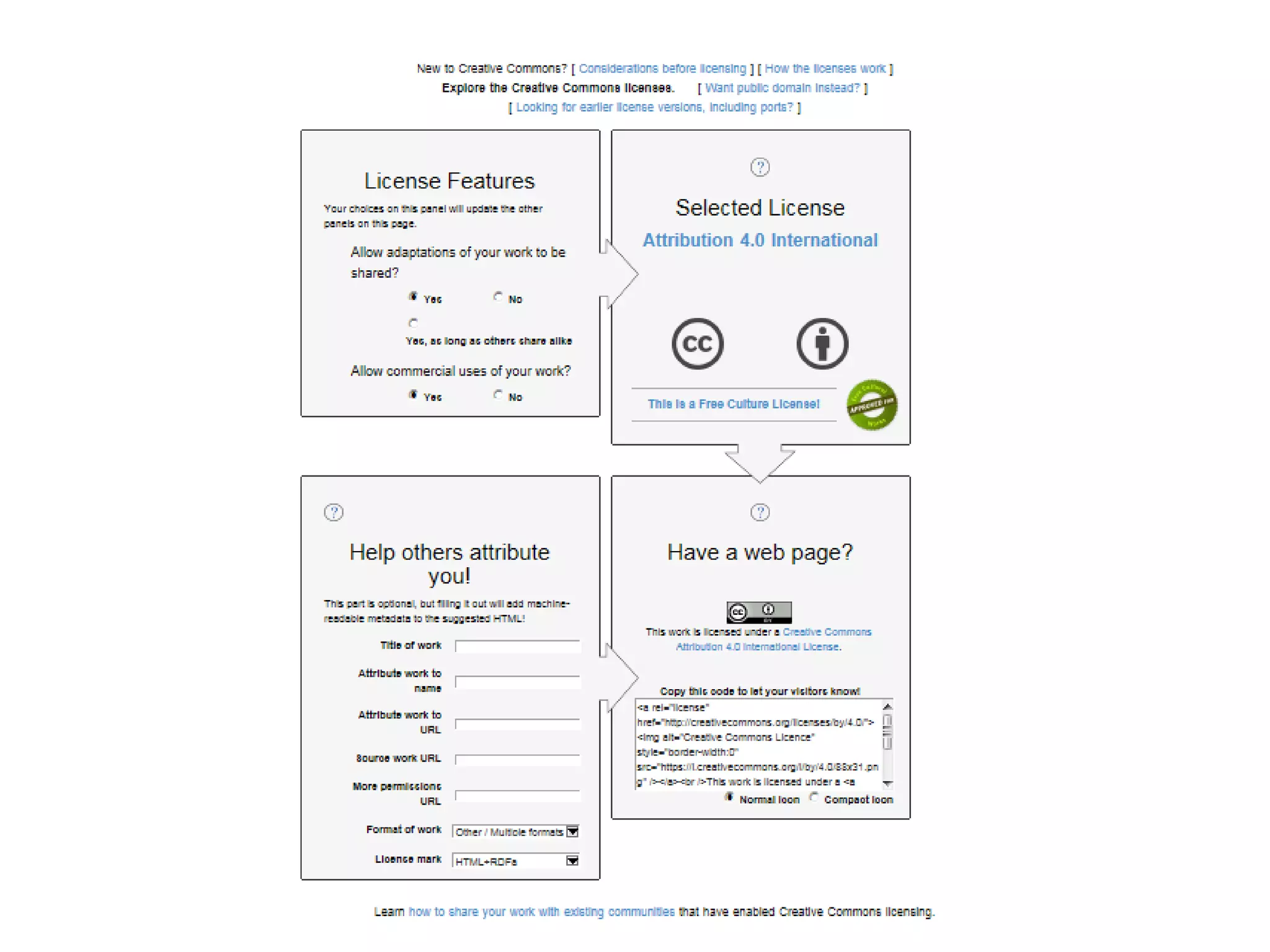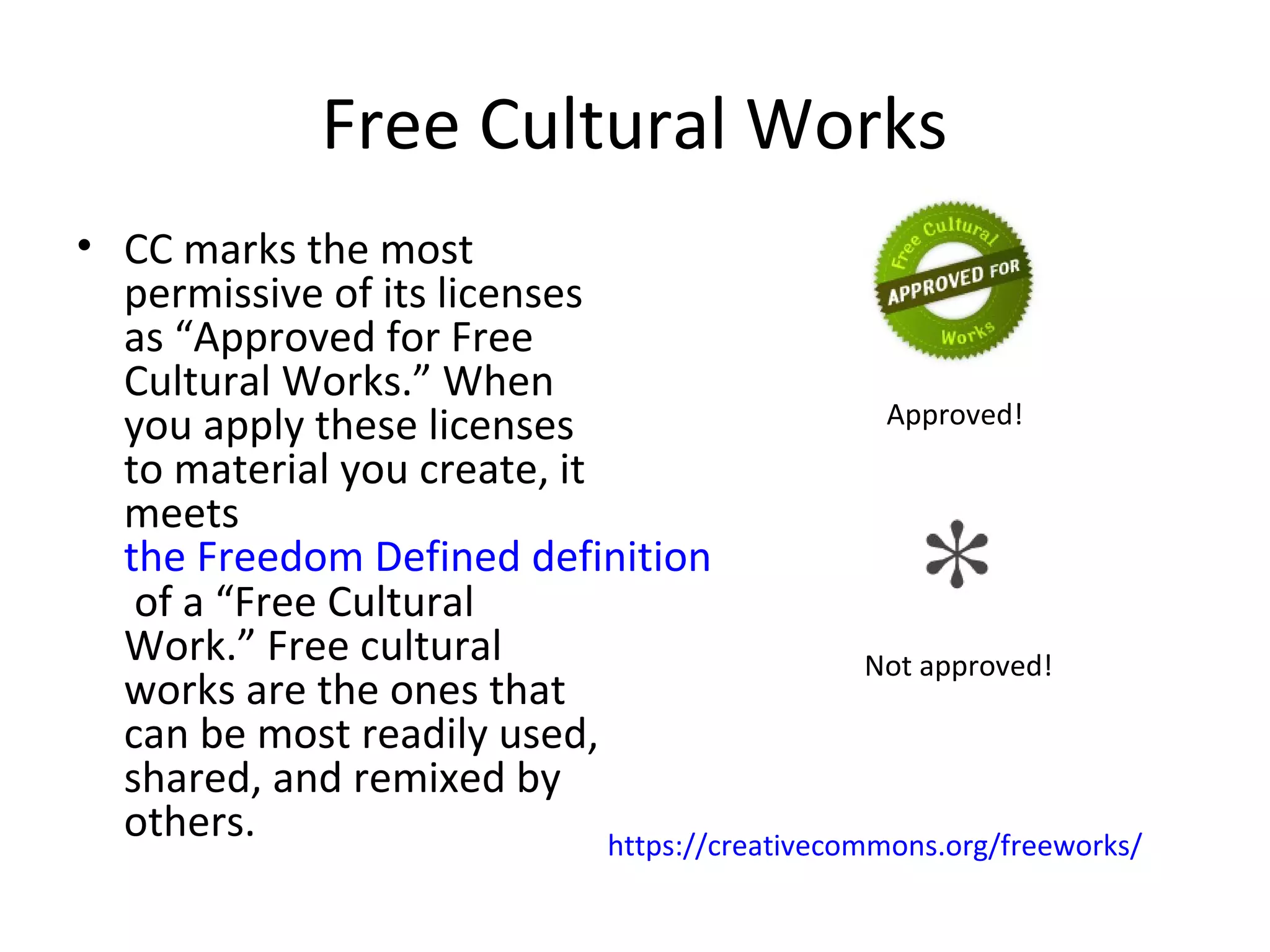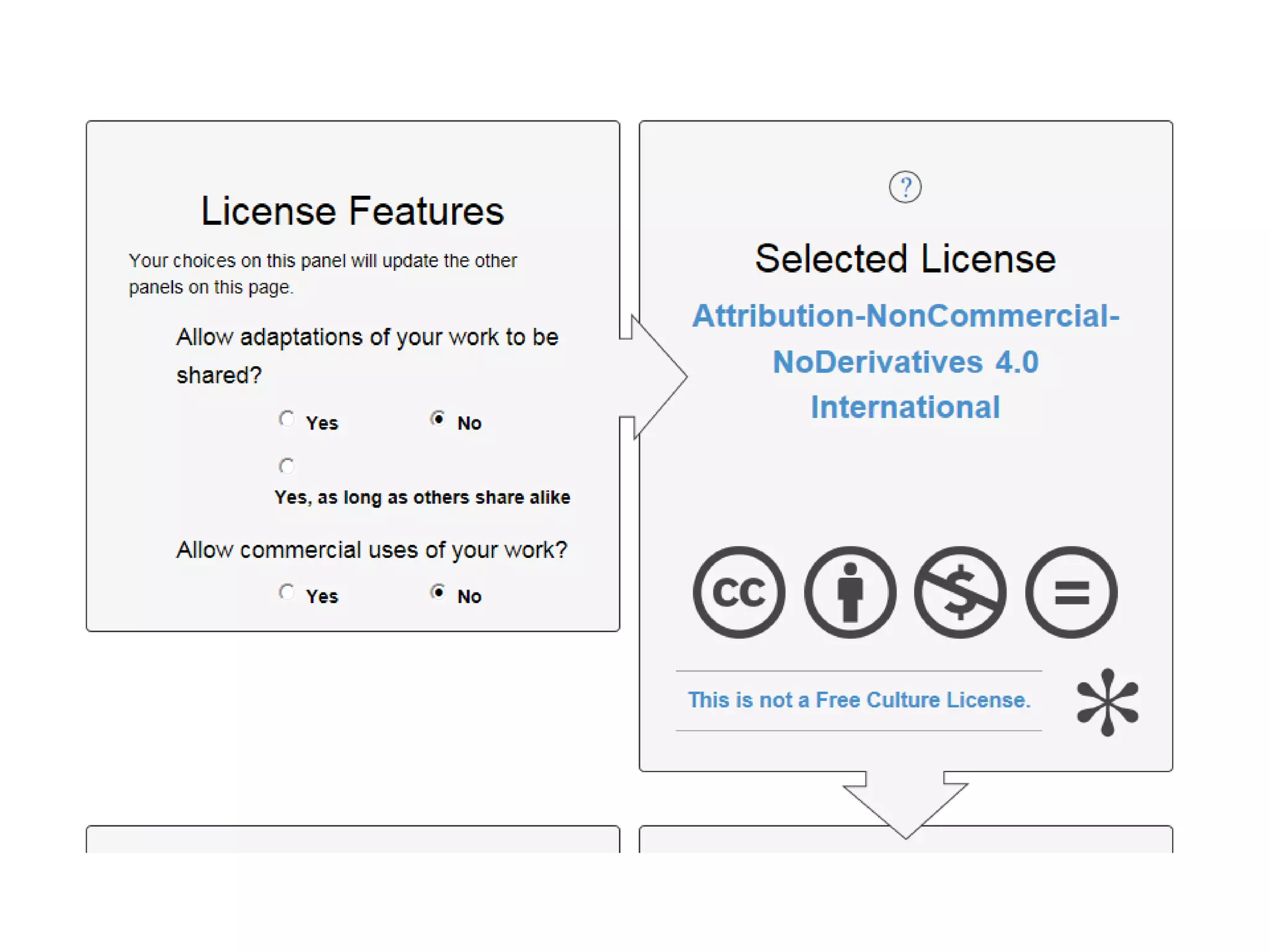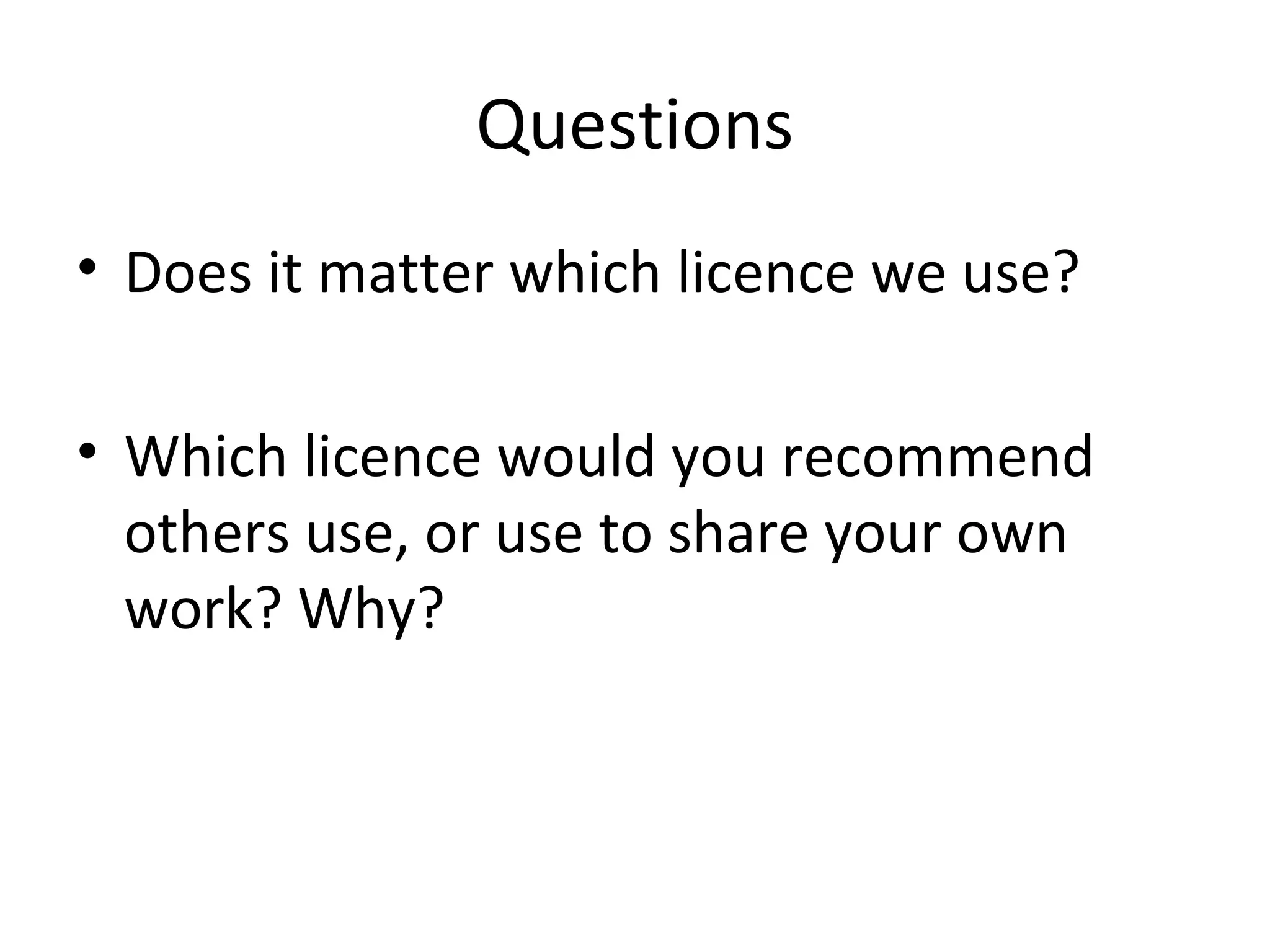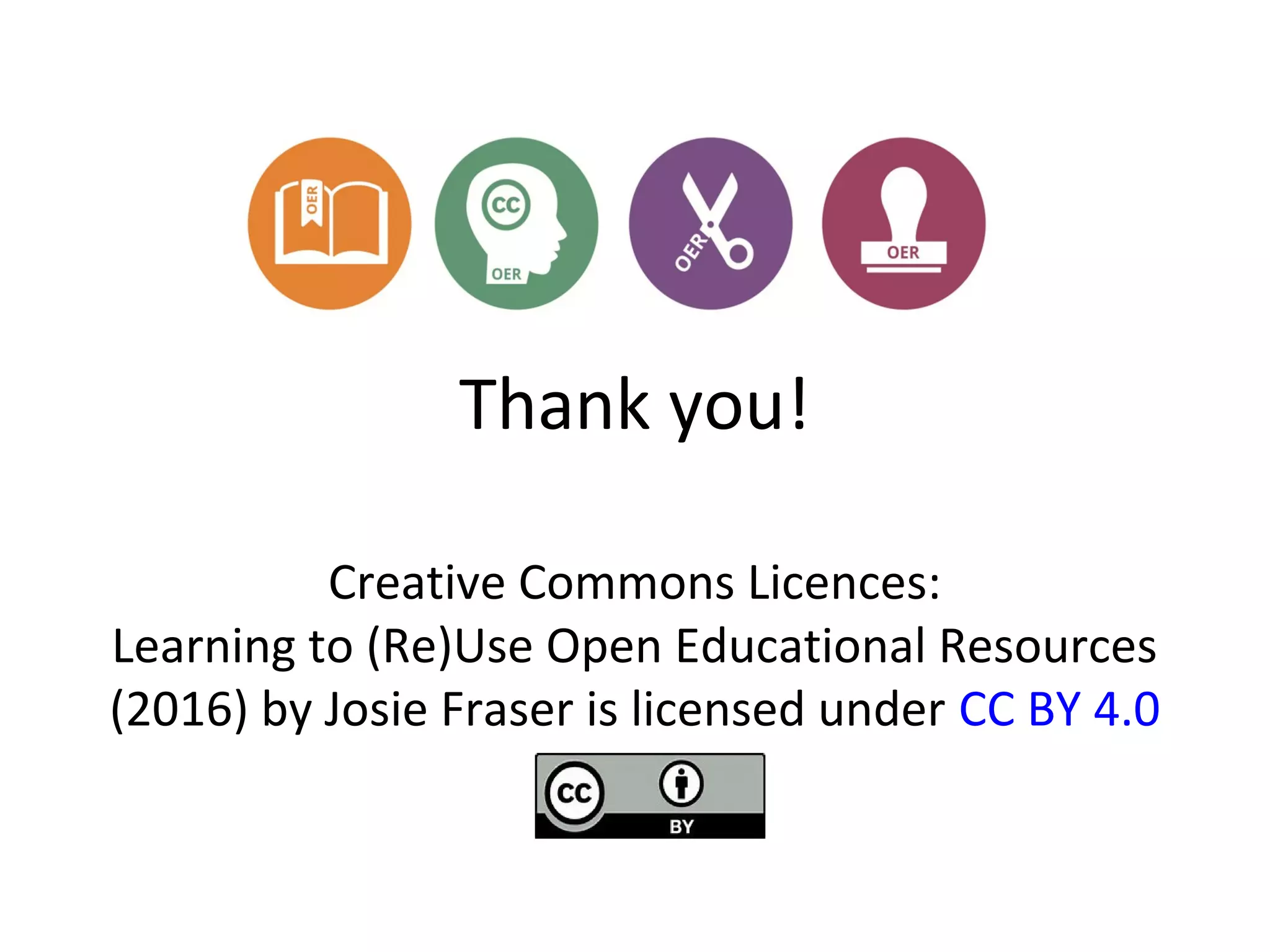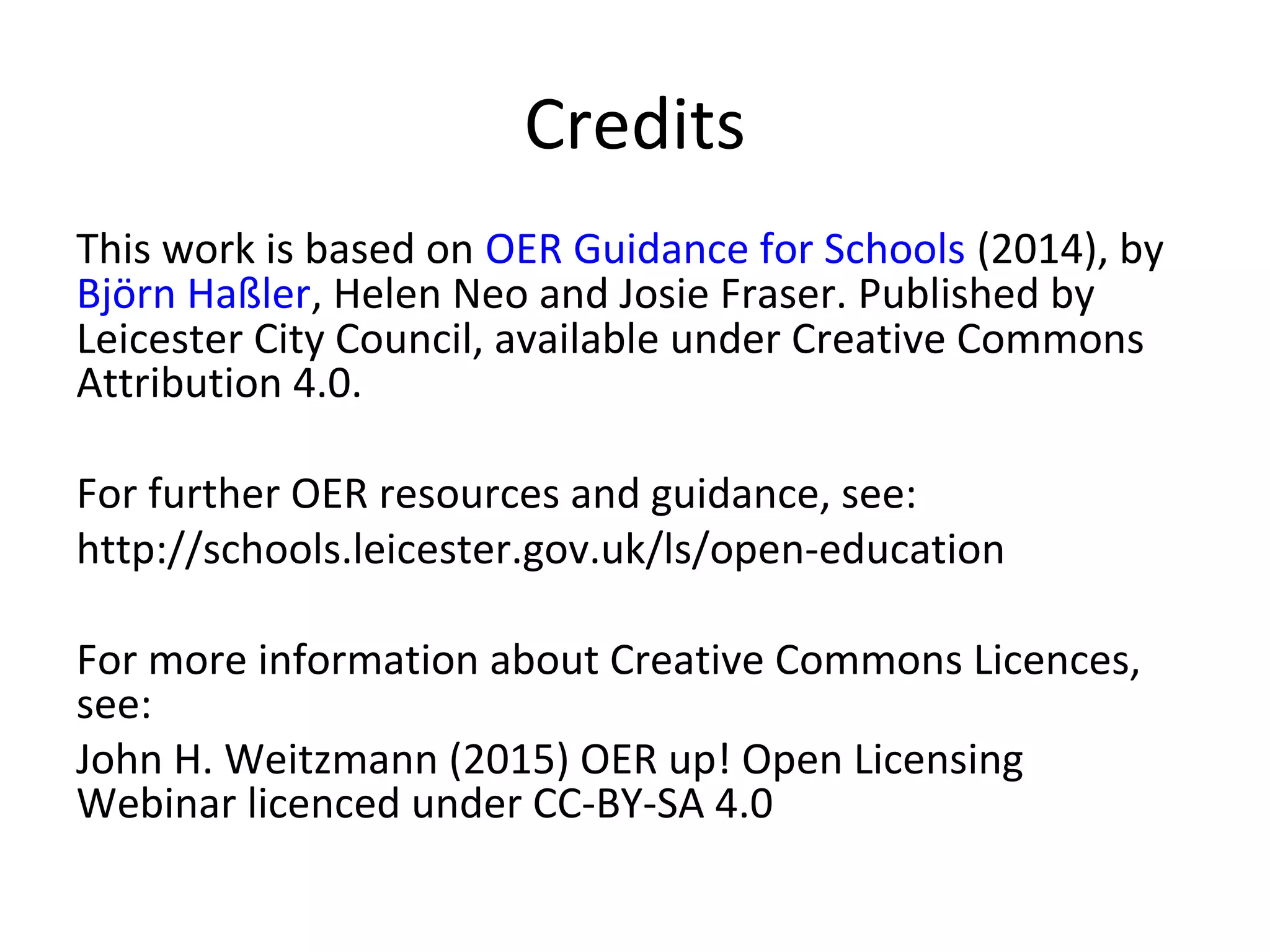The document discusses copyright and open licensing schemes for educational resources. It explains that copyright automatically grants creators control over how their works are used, but they can choose to release works under open licenses like Creative Commons licenses. These licenses allow others to legally share, reuse and remix works without permission as long as they provide attribution. The document outlines the various Creative Commons license types which differ in whether others can modify or use the work for commercial purposes. It encourages educators to use open licenses to make their works more openly available and reusable by others.
